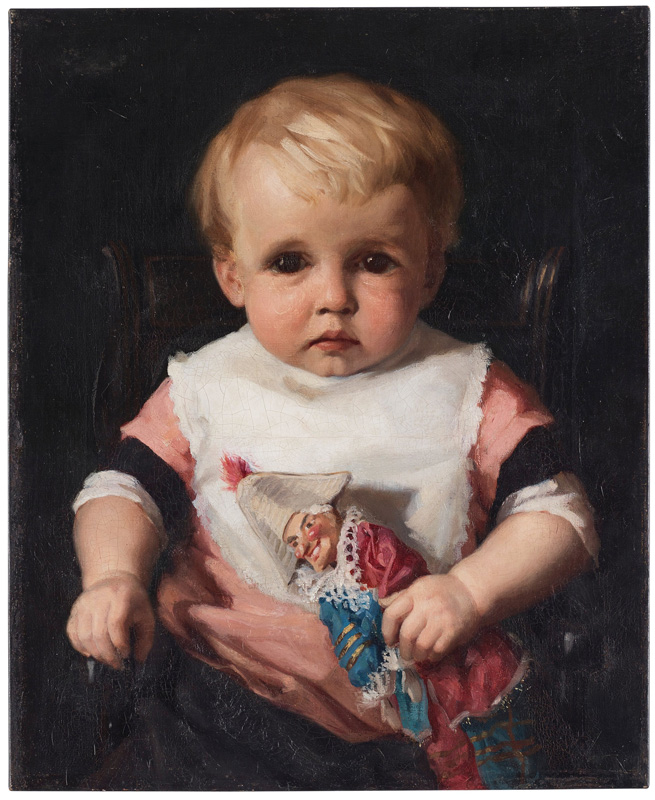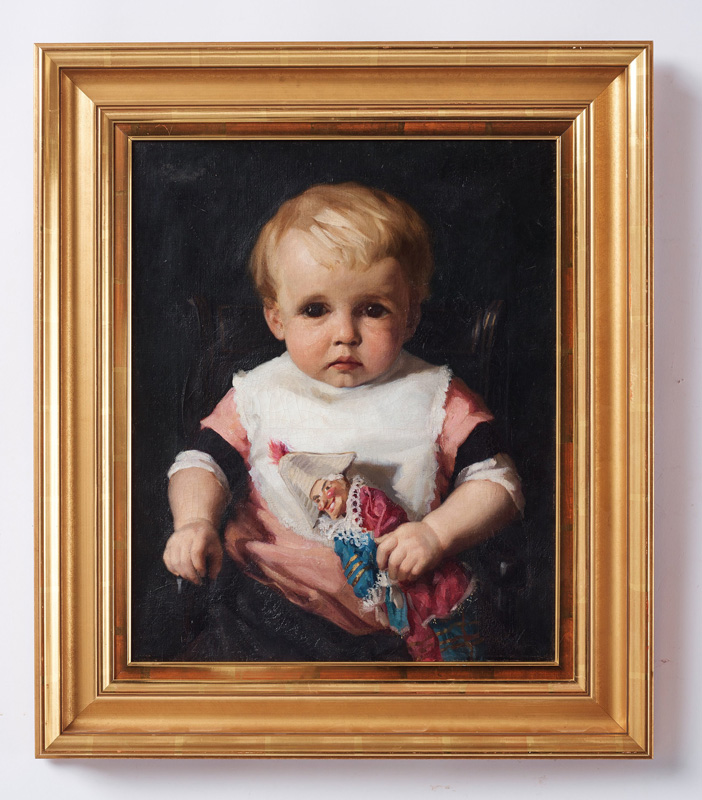Albert Edelfelt, ”Portrait of Ragnar, son of the artist Berndt Lindholm"
Important Winter Sale presents
Albert Edelfelt, ”Portrait of Ragnar, son of the artist Berndt Lindholm.”
With Albert Edelfelt Finnish art became a European affair. Edelfelt was quickly recognised by an international art scene and moved, as is visible in his paintings, between a local and a continental life. Today Edelfelt is considered one of the most beloved artists in Finnish art history. His subjects demonstrate an artistic range that alternates between historical painting and prestigious society portraits to scenes depicting groups of people in the Finnish archipelago.
Thanks to a state scholarship, the young artist Edelfelt was given the chance to leave Helsinki and travel around Europe. His journey first took him to the art academy in Antwerp and later on to the epicentre of art at the time – Paris. There was a growing colony of Finnish and Swedish artists in Paris, including Berndt Lindholm, Adolf von Becker and Ernst Josephson.
The first impressionist exhibition was held in 1874, the same year that Edelfelt arrived in Paris. However, he wasn’t tempted by the famous, free painting schools that many of the other Nordic painters sought. His ambivalent attitude towards the impressionists made him seek training more characterised by academic historical painting. In 1874 he enrolled at Jean-Louis Gérôme’s studio at the Ecole Nationale des Beaux-Arts. Bertel Hintze has described how Edelfelt was first met by mockery at Gérôme’s studio but then invited everyone for the obligatory round of wine and cigars before, to general cheers, singing a Swedish sailor’s song. He was henceforth accepted within this new circle of friends. In time Edelfelt came to establish a large international network of artists, collectors, writers and cultural personalities in a Paris that was bursting with life.

Yet success did not come immediately. Edelfelt’s first composition ”Rokokodam”, executed in Paris in 1874, was met by far from enthusiastic critics back home in Finland. Hintze describes the situation as follows: ”Edelfelt was deeply upset by the public defeat he had suffered. In order to restore himself he sent to the Salon in spring 1875 a portrait, painted at the start of the year, of Berndt Lindholm’s boy; his melancholy increased to despair when the portrait was rejected by the jury. According to Jac. Ahrenberg (who at this time resided in Paris) he considered it a complete train wreck and was sorry, as the first shock had subsided, that he had not been sensible and stayed at university to become a lecturer in Greek who only painted on Sundays.”
Despite this great disappointment Edelfelt, who was just twenty-three years old, would two years later have his big breakthrough with the painting "Drottning Blanka", which was accepted at the Salon in 1877. The painting, which was praised by the critics, would become one of the most recognised artworks in the Nordic countries through its reproductions.
In the charming portrait of the child Ragnar Lindholm, the little two-year-old is portrayed against a dark, almost black background. It is reminiscent of more traditional historical painting, a notion which recurs with the subject of Drottning Blanka. At the same time it is possible to see how the new artistic movements have impacted the artist in his technique and attitude. His brushstrokes are broad and energetic, the colour dynamic and the light lively. The portrait should be considered as an important step on the way towards the celebrated and praised paintings that Edelfelt executed in the period that followed.
The work is sold at the Important Winter Sale.
Estimate 800 000 - 1 000 000 SEK.
Viewing: December 1 – 6th, Berzelii Park, Stockholm.
Open: Mon–Fri 11 AM – 18 PM, Sat – Sun 11 AM – 16 PM.
Auction: December 7 – 9th, Arsenalsgatan 2, Stockholm.
To the work
Explore the cataloge

Requests & condition reports Contact specialist

Stockholm
Johan Jinnerot
Specialist Art and Old master paintings
+46 (0)739 400 801

Stockholm
Lena Rydén
Head of Art, Specialist Modern and 19th century Art
+46 (0)707 78 35 71

Stockholm
Andreas Rydén
Head Specialist, Art, Deputy Managing Director
+46 (0)728 58 71 39





























